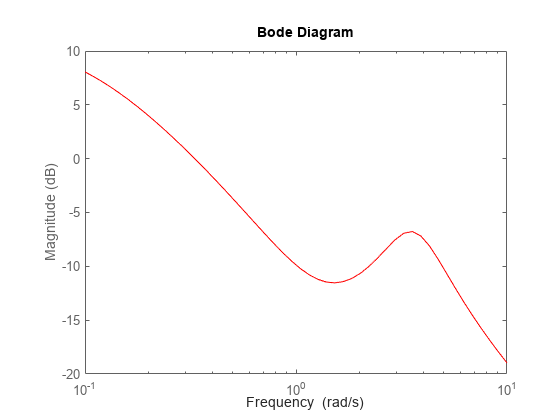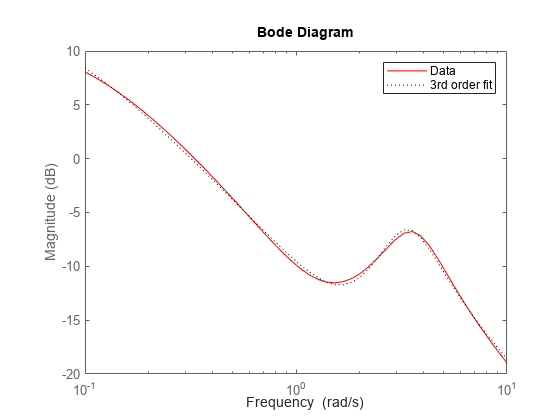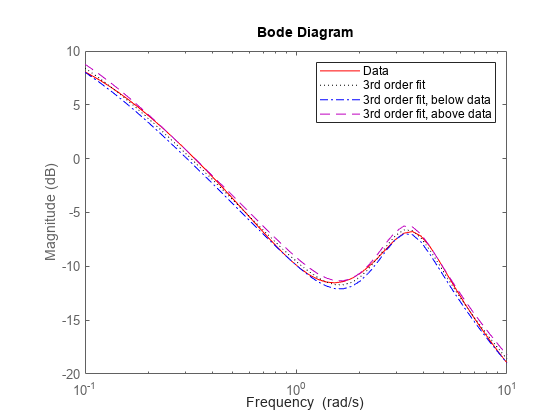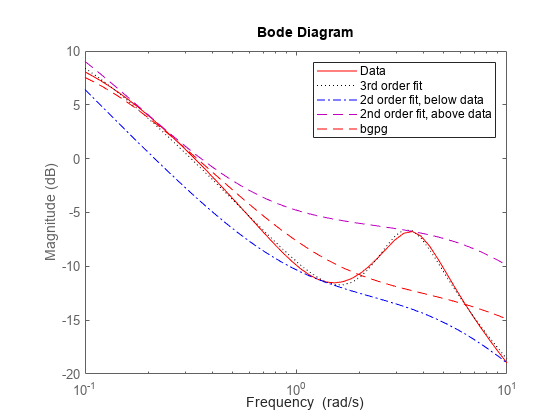fitmagfrd
Fit frequency response magnitude data with minimum-phase state-space model using log-Chebyshev magnitude design
Description
Examples
Input Arguments
Output Arguments
Algorithms
fitmagfrd uses a version of log-Chebyshev magnitude design,
solving
min f subject to (at every frequency point in A):
|d|^2 /(1+ f/WT) < |n|^2/A^2 < |d|^2*(1 + f/WT)
plus additional constraints imposed with C. Here n
and ddenote the numerator and denominator, respectively, and B =
n/d. n and d have orders
(N-RD) and N, respectively. The problem is solved
using linear programming for fixed f and bisection to minimize
f. An alternate approximate method, which cannot enforce the constraints
defined by C, is B =
fitfrd(genphase(A),N,RD,WT).
References
[1] Oppenheim, A.V., and R.W. Schaffer, Digital Signal Processing, Prentice Hall, New Jersey, 1975, p. 513.
[2] Boyd, S. and Vandenberghe, L., Convex Optimization, Cambridge University Press, 2004.
Version History
Introduced before R2006a



